The Real Market with Chris Rising – Ep. 89 Kevin Shannon
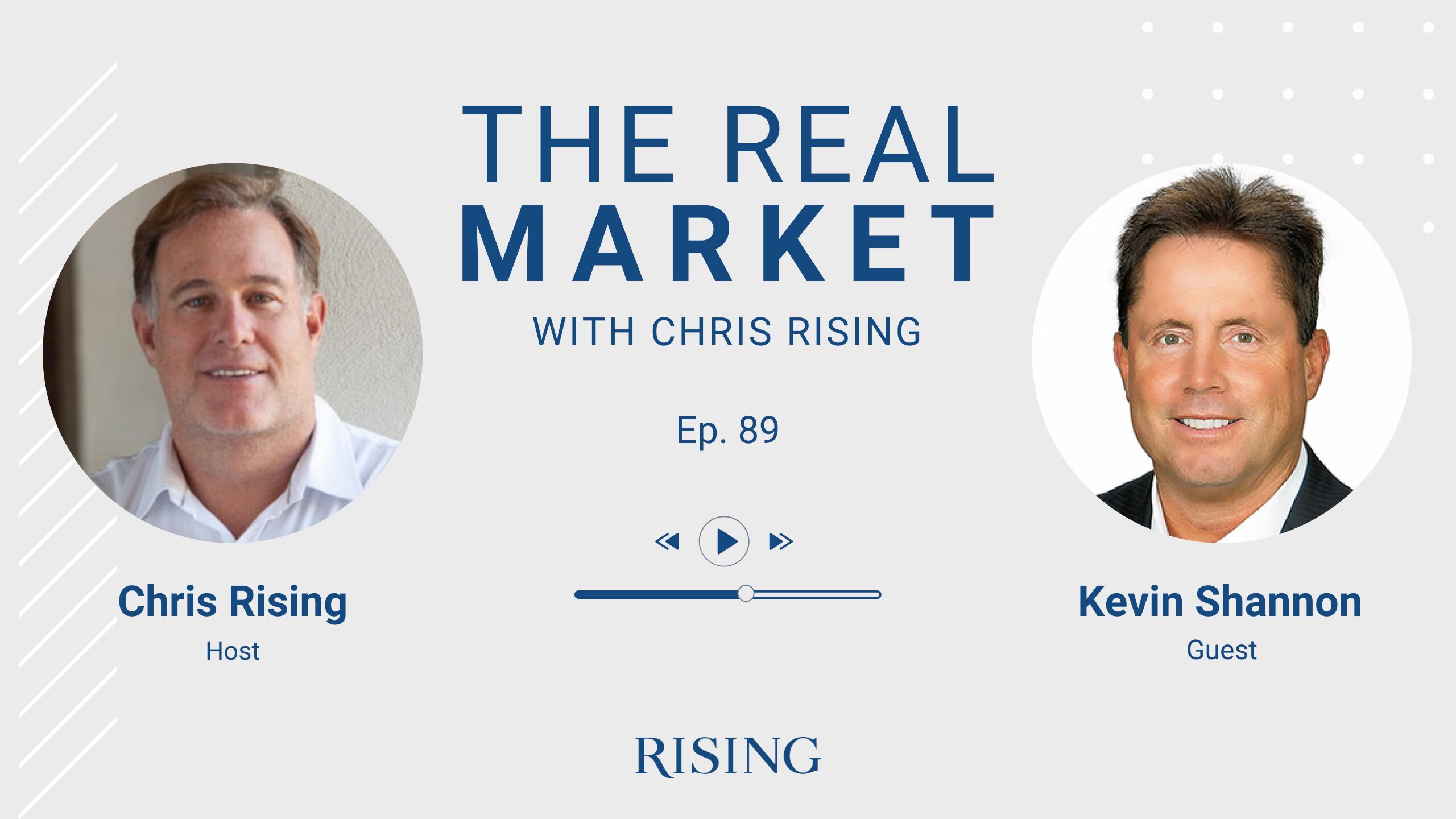
00:01
Welcome to The Real Market with Chris Rising, the only podcast that brings the real estate conference panel to your headphones. You’ll hear from superstars from every realm of commercial real estate, the biggest brokers, the most well-known architects, the largest investors, and the most visionary developers. We’ll learn what they do, how they do it, and what drives their success. We’ll discuss the latest trends across regional markets, capital flows, both national and global. And we’ll explore technology’s role in shaping all of them.
00:32
We’ll take a clear-eyed look at where we’ve been, where we are now, and what’s to come. Real conversations. Real experts. Real insights. This is the real market.
00:50
Okay, welcome to the real market with Chris Rising. I’m really excited to have Kevin Shannon back. He was my first guest when I started this podcast in 2019 or so. Kevin, the world was a little different back then. Evolved from whether interest rates were going to keep going down to zero and into the world, where are they going to keep going up above five? So it’s a big change in how things are going. But how’s your world on a day-to-day basis selling major office buildings and industrial buildings in this environment?
01:16
You know, it’s a lot tougher. You know, the big change has been the cost of capital. And that’s, you know, that will change too. I mean, if you look at the forward curve, it’s surprising how frequently it’s wrong. And so, you know, the Fed misled a lot of us and said that interest rates would stay low for a long time. They’re now saying interest rates will stay high. But if you look at the history of success with the forward curve, you could make an argument they’re going to come back down and…
01:45
But the cost of capital has been the main thing that’s impacted our business. And if you look at the treasury, the treasury is based on inflation expectations and then real rates and the rise in real rates over 300 basis points in the last years. We haven’t seen that kind of percentage increase ever. And so it was a shock to the system. And it’s taking time for capital to digest where pricing should be. And everyone talks about the bid-ask. It’s just from a capital markets perspective.
02:15
Especially for the office sector, it’s significantly impacted. And the office sector in particular is battling not only the cost of capital but also conviction and utilization post-COVID with the work from home. So it’s got the double whammy. So it’s a tough capital market environment. It will change. We’ve all been through these cycles. But right now, we’re trying to keep paying the light bills. And the big deals are sort of off the table right now, for the most part. As you’ve had to market buildings within certain central business districts and all.
02:45
What has been the biggest pushback on office? Has it been that people just don’t believe people are gonna use office or is it just not right now? We don’t know what’s happening. I mean, I find it hard to believe that anybody thinks that the office as a sector is just going away. You know, it’s a combination of things, Chris. It was easier to sell office buildings during the pandemic than it was post-pandemic. During the pandemic, interest rates were really low. They went to zero and…
03:11
people all assumed everyone was gonna come back to the office as soon as we had a vaccine and the pandemic was over. The fact is, you know, the pandemic’s been over for a couple of years and our utilization rate is about 50%. And so the conviction in this sector is challenged and you have a lot of research, by the way, from people like Green Street and CB Investors, you know, saying that demand.
03:34
for office has been permanently impacted by anywhere from 10 to 20%. And so you have research saying that you’ve got too much space. You’ve got research from universities like USC saying that, you know, call centers really need them and even more people are more efficient working from home than going to a call center. We’re also in a market that’s a commuter market. And when you take away the commute, especially when you’re talking about being on the San Diego freeway, you know, in West LA, you know, it’s a big advantage.
04:04
All that being said though, people need to come back to the office. And if you’re in a high beta industry, that collaboration, that communication, the promotions, the learning curve is gonna be dramatically different if you’re in the office. And so it’ll take time. I think people will come back to the office.
04:21
more dramatically when we were in a recession, which I do think there’s a potential for that. But right now, it’s been sort of a slow curve with increased utilization. More employees like Amazon saying, hey, if you don’t need to be in the office, we may not need you. And the CBDs got hit hard because the gateway CBDs, especially the Washington, D.C., Seattle, San Francisco, L.A., all those CBDs were the…
04:48
products mostly vertical. They got impacted hardest when COVID hit. Suburban product got back sooner, but the CBDs are catching up. And if you talk to people like Blackstone, the CBDs where people still wanna make a bet because even if you go to the hybrid model, being in a 24/7 environment is part of the attraction to go into the office. And so I think the CBD is not dead, it will come back. It’s just taking longer than we all thought.
05:16
I find interesting is if you look at Cherry Creek in Denver, if you look at Century City in Los Angeles, you look at parts of Manhattan, you look at Dallas, the utilization rates are obscenely high. I mean, they are really high, probably higher than they were pre-COVID. It just seems to be more of the ones that have
05:34
If you’re not willing to take public transportation, they have a longer commute where people are slower. But even in downtown LA at one cow on Wednesdays now we’re more than a thousand people, which is higher than it was on average before COVID. So it’s certainly not Monday through Friday, but we are seeing specific days as kind of in-person days. I think Friday’s probably gone.
05:54
The way of the dodo bird, it’s not coming back as an office day. But it doesn’t feel like it’s, it’s training. We’re not seeing that the appraisers are really doing anything other than giving 10 caps on office. We’re not seeing capital from New York interested in LA, San Francisco, downtown San Diego, downtown Seattle, downtown Chicago. So it does feel like that that’s on the sidelines for a while. And as I look at everything, it feels a lot like the early 90s, you know, just when we have that overbuilding.
06:20
across the country after the SNL and all that, and the suburbs came back first. What do you think of that analogy to the early 90s in terms of the office sector? There are some parallels. In the early 90s, we had the RTC, and we were overbuilt, grossly overbuilt. Anybody who wanted to build an office building could go to their local savings and loan.
06:39
and get a construction loan with very little underwriting scrutiny. And so if work from home did decrease the need for office, then we are essentially overbuilt, although we’re overbuilt in the commodity product. You mentioned some markets like Cherry Creek. You look at one Vanderbilt in New York, you look at Century City, you look at Miami. There are markets where you have healthy rent growth going on and people are in the office. And by the way, the rents are really high, too. If you’re one Vanderbilt, you’re paying 200 bucks a foot.
07:09
better get to the office because somebody’s paying a lot of rent and you’re probably a high caliber employee and you need to be in the office to work collaboratively in those types of companies. But those markets are more isolated. In ‘91, The Fed stepped in with the RTC. The market for office debt right now is so bad and it’s frozen, right? When an existing debt comes due, there’s no lender to take that existing lender out. The regional banks’ volumes and their velocities declined tremendously.
07:38
There’s contrarian markets right now where the only way you can get a loan is with recourse or with a hard money lender. And so you’ve got people paying 11%, 12% right now to get an office loan in some of these markets. SOFR plus 600 on a lot of the rent rolls that have less walled and more risk with rollover and vacancy. You know, SOFR plus 600 is very expensive. So I do think the Fed needs to step in.
08:04
to the office sector, not the industrial, not the life science, not these other sectors. I think they need to create a window or some type of vehicle. We’ve seen it with TALF, we’ve seen it with the RTC. We saw it when there was a run on the community banks, there was a window where the banks can go and get money. I think we need to create a window for office loans because I’m not sure what unfreezes the lack of liquidity we currently have. And it could be a window like here’s.
08:27
JP Morgan, they go to the window, say, hey, Fed, give me 70 cents on the dollar. Fed goes, okay, the loan’s worth 50 cents, but I’ll give you 70 cents. You have to put it back and lend it on office. And that’s the type of thing that I think is needed to unfreeze the system. So I think in terms of the parallels to the early 90s, you may see Fed involvement. Not right away, but I think at some point because I don’t know how long the office market could be frozen and something needs to… If you don’t have…
08:54
liquidity on the debt side of it. What’s happening to prices we’re watching is pretty scary. It’s a draconian drop in value. And I do think the parallel to the oversupply that we experienced in the early 90s is there because of work from home. I do think though that work from home is gonna get better and better and better. And if you look at Asia, you know, the occupancy in Seoul is 98, 99%, the same in Tokyo. You can go to Tokyo and still borrow at 1%.
09:22
1-something percent and cap rates in Tokyo are still 3%. But in the United States, if you’re borrowing an 11% or 10%, it’s not surprising you need to have a cap rate of 10% to get somebody off the sideline right now, given the cost of capital. Well, some interesting points you made there. My understanding is Western Europe is pretty much like we are in most of our major cities where they’re about 50% on a daily basis, maybe a little bit higher.
09:47
But Asia and the Middle East, people are back in the office five days a week. And, you know, maybe there’s some give on doing video calls from different locations, but culturally that the office is still really big there. Maybe it’s a recession that kickstarts this. I get the sense that it’s going to be a Monday through Thursday. And even then it’s going to be very choreographed by management and saying, you need to be in for these things. But going back to it, I mean, I just don’t understand how a young person, I don’t mean that.
10:15
internalistically, but how a young person can even learn. Because I spent most of my first five years just listening to older people have conversations and reading documents and that. I mean, is that valid, do you think, that that’s going to come back? It has to come back. If you’re graduating from college and you want to work from home, don’t call me for an interview. If you’re ambitious and you’re young and you’re, you know, I always tell young people, you want to show your…
10:41
employer how hungry you are. You want to be the first guy in the office, the last guy out of the office. You’ll do any task. I don’t know any ambitious person that would be coming out of college that would think that work from home is an acceptable option. If you’re a young attorney, a young commercial real estate broker, I don’t care what industry you’re in. If you’ve gone to college and you’ve gotten that degree, even if you’re in sales, you learn so much.
11:06
by listening to people that have been through a few cycles. A lot of people right now haven’t been through a cycle like this before because we’ve had a nice run. I mean, basically, since 2008, interest rates have done nothing but go down. So generally, every time loans came due, every time you had to refinance, the rates got lower and lower. And we’re now in a totally different type of capital market environment rate-wise. And a lot of the people making these decisions haven’t been through these cycles like you and I have.
11:34
You know, 91 was different from the GFC. The GFC, you know, was an equal opportunity hammer. It hit every sector hard, but this one’s different. This cycle is different. We saw how industrial and life science exploded, and we’ve seen what it’s done to office. I do think, by the way, and I know we’ve been focusing more on office, I do think the industrial and multifamily are just a cost of capital issue. And the fact that…
12:02
Building is slowing down so dramatically, means it’s gonna be a quick recovery because the cost of capital issue will be solved and the fundamentals generally are really strong in most of the markets. You’re not gonna have double-digit rent growth in the industrial side like we’ve seen.
12:16
for last few years. We basically saw decades’ worth of rent growth in two or three years, right? And that’s not gonna happen all the time, but we are gonna see more normal rent growth, but what’s happening is the cost of capital is really putting the brakes on a lot of new spec construction, the cost of materials as well as hampering that. So I think you’re gonna see.
12:37
a quick recovery for both industrial multifamily and then a quick bounce back. I think for office, unfortunately, it’s going to take longer. I do think Fridays are off the table. I think the hybrid work model is here to stay. I think it ends up being around four days a week. But people are going to come back to the office and you’ve seen employers steadily get the upper hand. It’s a slow pace of increase, but it’s going to continue up. And you’ll never be back at 100%, by the way, because if you take away Fridays, the most you can get is 80%.
13:07
Right? Yeah. Yeah. Well, you know, if you look at Century City, the talent agencies obviously view being in the office as vitally important to their business. Investment banks view it that way. The law firms on that side of town view it that way. To me, it just seems that we’ve got to have more active leadership on making our inner cities, or at least our CBDs feel safe. And most importantly, you got to make it feel safe on these billions of dollars we spend on our public transportation so that people will use it. If you start to do that, then these
13:36
San Francisco’s, Los Angeles, Seattle’s, Chicago’s become a place you want to be. And I have to, at some point, we’re going to hit that level where a law firm goes, all my profit is going to pay in rent. Now, a downtown might not be a bad place, and it’s close to the courthouse. Downtown’s got beautiful buildings. It’s a shame what’s happening with crime and homelessness. And unfortunately, under our new regime, it hasn’t, you know, the numbers have increased. They haven’t gotten lower.
14:02
Although there are plenty of plans in place or proposed to try to address it. But the reality is if a woman employee doesn’t feel safe going to the office, it’s going to be really hard to lease space in that building. And, you know, Bunker Hill is a little bit of an island, but there’s other parts of downtown, other parts of Hollywood, other parts throughout the city. I mean, even parts of Santa Monica where homelessness is an issue. And the reason Century Cities
14:27
doing so well as it’s an oasis. And it’s the sort of environment that doesn’t have the crime and homelessness issues. And so it’s attracting talent. It’s also attracting employers and people that will pay a lot higher to feel safer and be in that kind of environment, which also, by the way, happens to be closer to executive housing, which has always been important. But you’re right, people need to feel safe and they’ll use public transportation more. And if you look at…
14:53
New York, the city is full, right? Restaurants are full, the apartment rents are going through the roof, people are coming back. You’re seeing in the gateway markets, by the way, the multifamily components starting to come back. Downtown LA is a little bit tougher, but San Francisco is making some… You’re seeing some positive traction there. But you look at the ridership in the city of San Francisco, you know, BART is less than 40% of what it was before. Even in Manhattan, you know, it’s about 70%. We need to get people…
15:22
comfortable that they can get on public transportation. It’s gonna be safe and get those numbers up because you’re absolutely right. It’s one of the reasons it’s making it harder for people to go to the office. Nobody wants to sit on the San Diego freeway, as they said it, at 9 a.m., trying to get to Santa Monica from an isolated place like Palos Verdes. Yeah.
15:41
Well, you know what’s going to be interesting here in Los Angeles, we just had this massive fire on the 10 freeway at the 110, which means everybody has to drive to Century City who is not an executive is coming east of downtown LA, and it’s going to be a total mess. So you know, I wonder if that’s going to change some behavior and some thoughts about using public transportation, because I don’t have the faith that this administration, the mayor will fix it in three months like Dick Reardon in his administration.
16:06
did when we had the earthquake. So that’s something out there. But I wanted to go a little bit into let’s talk about how interest rates will go through industrial and multifamily, but just in general is affecting new construction. I keep hearing from a lot of people who have quality potential build a suits with quality tenants with credit signing a lease, but that lease rate won’t meet what the cost of a construction loan is. So therefore people are just on the sidelines.
16:31
and you’ll probably see major corporations having to fund their own manufacturing, you won’t get a developer to do it. Are you seeing something similar about, I mean, when you’re talking about 12, 15% construction loans, it’s hard to make the math work on a build-a-suit. It is, build-a-suit or spec, right? And so, and the cost of materials with the client in the pace of new construction hasn’t really gone down yet. There was anecdotal evidence of the cost
17:01
the decreases in construction costs that I think you’re going to see over the next year or two as the pipeline diminishes greatly. If you’re building a spec industrial building, your cost to capital is doubled and you may need a little bit of recourse. And let’s face it, when you’re in uncertain times like we are right now, the last thing people want to do is build a spec project that’s not going to deliver for a year or two or three or four, depending on the profile of the deal.
17:27
They go to the sidelines and they wait and they pause. And historically, institutional capital has done that every cycle. The most active buyers for land sites right now are family office buyers who have a, you know, forever hold. They’re not merchant builders looking to get in and out because that program’s really stopped right now. I do believe the contrarian…
17:47
spec developers for industrial and multifamily. And a lot of the markets will be rewarded because, you know, with everything stopping, I think there will be pent-up demand again, then some of the things that increase the need for space haven’t changed. It’s too expensive to buy a house, especially with the interest rates and the cost of housing hasn’t gone down. So renters are going to still need multifamily product.
18:09
And the on-shoring and the increase in inventories for industrial, that’s not going to change either. So I think that those that are brave might have good timing in certain markets, not every market. But I do think the construction pipeline, when you’re doubling your cost of capital when your leverage is going down, and when you may even need recourse, of course, you’re going to see that market sort of stop. And the asset class that’s being hammered by that is land.
18:36
right? Because there’s a lot of deals right now. You can put in the land for free and it doesn’t pencil. And so, and you’ve seen even for industrial, industrial markets like the South Bay, you know, land go from 220 to 125, right? It’s just the math. It’s not that the market’s not a great long-term market. It’s just the math and the cost of capital. Let’s talk a little bit on industrial. You know, I keep hearing, I go to these national conferences and you hear how overbuilt industrial is for million square footers and plus in Dallas and in Phoenix.
19:05
and parts of the IE. You think that’s a concern, that there’s just been way too much speculative development hoping for the Amazon type of user? And what’s your take on that? I think there’s gonna be some short-term softness. You are seeing rents on the million square footers rolled back a little bit in the Inland Empire. The buck 60 triple net deal might be a buck 40 triple net now just because of supply demand. But trees don’t always grow to the sky. And I think what we’re going back to is normal rent growth.
19:34
The hyper rent growth they described earlier is not going to continue forever. And so you do have some increased amounts of supply. But again, I love the multifamily sector as well. The barriers to entry for industrial are getting harder and harder with NIMBYism. And so the ability to build those million-square footers in those markets is getting harder and harder. And so I think that the…
19:56
You’re going to have some short-term softness, and then I think it’s going to pick up, but it’s probably not going to pick up to the double-digit, right? You can’t have that all the time, but it’s going to be more normal rent growth. So I do see a little bit of softness, but it’s going to be short-term. And because of what’s happening to the spigot of new construction, I think the absorption is going to get us back to stabilization very quickly. And I do think, because we have talked about office, it is perverse when we think a market’s overbuilt because the…
20:24
vacancy rates now 4%. When you look at markets like downtown San Francisco, where the office vacancy rates with availability are approaching 40%, right? So we’ve been spoiled on the industrial front. In markets like Phoenix, when you look at the population growth, you know, the growth in inventory is natural. They need a lot of product and, you know, I think Phoenix for industrial still want to…
20:44
top markets in the United States and the absorption numbers are terrific there. There is a lot of new supply, but you look at the population growth, I think they’ll catch up quickly, especially as the pace of new supply moderates. I agree with everything you said, but one of the things that I think has gotten a little forgotten about why some of these markets are so strong is demographics are real. People are moving to Phoenix. I mean, the chip business there is a real thing. People are moving not just domestically, they’re moving from…
21:13
Asia as well and they’re putting down new routes in Arizona and the growth in Texas is absolutely real. Dallas is growing as a city and so you can see why new product is needed. Fleming to the multifamily. What a lot of people are talking about is people getting caught because they didn’t edge or fix their debt or they just happen to be coming to the natural life cycle, the end of a loan term and they’re just hit where the NOI just can’t support rates where they are today.
21:41
Is that something that you guys are seeing out there for your multi, your residential? We are. I feel bad for the people that listen to the Fed because the Fed guided us to low rates for longer. Right. And it didn’t happen. And then they changed the rules of the game. And as I said, the forward curve is far more frequently than you would suspect. If you originated floating rate debt for multifamily when rates were near zero, you’re going to have a shock as that debt comes due.
22:10
If you had a three to five year floater, you’re going to see some of those maturities come into this year, next year, and the year after. And the cost of Fetty and Franny has changed. I mean, it’s come back a little bit, which is great. And I do think with the inflation report we just got and the pullback in the 10 year that hopefully we’ve seen the highest rates we’re going to see.
22:31
And the Fed’s not going to announce a pivot because they can’t. But I think the tighter lending standards may have accomplished what further rate increases may have been targeted to accomplish. And so I do think we may have seen our highest cost of capital, but until rates come down more dramatically, you’re going to have a lot of debt coming due. And interest rate caps are so expensive right now.
22:55
I think you’re going to have some capital stacks that either need to sell or they’re going to need rescue capital. I think it’s really hard to find rescue capital for office right now because the values are so impaired, in many cases so far below the existing debt level, yet along the reconciled basis.
23:11
With multifamily though, there’s so much dry powder for that sector and so much conviction. I think it’s going to be a lot easier to get rescue capital, but a lot of these capital stacks are going to need some rescue capital and you will have some foreselling. The value add guys that were just banking on low exit caps, they’re in trouble. Those exit caps don’t exist today. When Fannie and Freddie’s at six and a half and was close to seven.
23:37
depending on whether it’s a green deal or not, those four, four and a half exit caps just aren’t going to be there. And so there’s going to be some distress in the multifamily space. It’s not going to be as draconian as the office because as I said, a lot of the office capital sacks are going to be hard to rescue because of how impaired the values are. And the other part of it is there’s so much capital on the sideline for multifamily. If you look at, everyone talks about all this dry powder. I think it’s paralyzed within decision because you’re not seeing it go out and get…
24:05
deals yet, even the vulture capital is waiting for a bottom right now. But I do think, you know, 53% of that powder has been allocated for multifamily strategies. So there’s a lot of capital waiting to go there. And Fannie and Freddie has always provided liquidity in that space, unlike the office sector, which doesn’t have, you know, debt liquidity to speak of right now. And so if you look at the dry powder for office right now, it’s about the same as self storage.
24:31
I mean, the sector is out of favor clearly, which by the way, I think creates an opportunity. I’ve always learned that the best time to buy is when sentiment’s the worst. I think the sentiment’s the worst right now we’ve ever seen it for office. The pace of decline on the fundamentals is clearly slowing. You’ve got some positive things happen. You just saw Walmart lease 720,000 feet in Silicon Valley. You’re going to see some other big news in LA in the year.
24:58
on users taking a big amount of space. You know, we’re at the point where I think you’re gonna make a lot of money buying some of the A and some of the more well located product when everyone else is afraid of their shadow. I think this is, we’re at a good time to buy. Although people are still concerned, I think there’s a lot of money to be made in the office sector. I think there’s gonna be a lot of opportunities in the multifamily sector for rescue capital because of the dynamics associated, where rates are and where they were originated.
25:25
So if you had that look at a crystal ball, what do you think 2024 is gonna be like in office? It’s gonna get better. You have data points printing right now in LA and San Francisco that are gonna really cause appraisers to adjust appraisals more boldly. You know, Pacific corporate towers, you’ve got 707, you got some comps that are pretty shocking. You also have them in San Francisco, right? It’s, you know, you got 60 Spear Street, you got, you know, 350 cal, 500 cal.
25:54
You’ve got some comps that are occurring in the 100 to 280-a-foot range. And so, you know, San Francisco, the market’s getting reset. LA, the market’s getting reset. And a market like Seattle right now, year to date, the largest deal has been 37 million. So the market hasn’t had the reset that San Francisco and LA are having.
26:15
The resets going to create a lot more reality relative to today’s valuations. And so I think velocity is going to increase dramatically next year. This year is going to be a horrible year if you’re a broker like me based on getting paid on transactions, especially in the office market. But I think you’re going to see the pace of play pick up next year for all product types. I do think you’re going to see rates come back down. I think they’ve peaked.
26:40
It wouldn’t surprise me if we had a recession and that would be good for rates. I mean, you’ve seen UBS and you’ve seen a couple of investment banks predict large rate decreases. I mean, UBS.
26:52
predicting 275 basis points over what’s projected on the downside for rates next year. Most people aren’t that aggressive. I do think rates are going to come back down. Spreads will come back down as a result. And I think velocities will bottom in. I’m not smart enough to say it’s going to be the second quarter, but I think by the second half of the year, a lot of what I’m describing will have happened. It may happen sooner. As I said before, I think we’re close to a bottom. And there are some people think we’re at a bottom.
27:21
So on that at a bottom kind of look, I mean, it seems to me that a bottom is going to have to be defined. You’ve got 777 Tower in Los Angeles that is coming to market at whatever the market will bear. You’ve got a similar deal in Denver coming to market right now that are under for sales. Who do you think are going to be buyers of these big class A office buildings that have pretty decent occupancy? I mean, they’re not empty. They’re not 100% lease, but they’ve got some cashflow to them.
27:50
I’m not seeing a Blackstone, a TPG, I’m not seeing the insurance companies lining up to say, hey, we think we’re pretty close to a bottom, let’s buy. So who is it going to be? The bigger the deal, the harder it is right now. The buyers right now are syndicators, family office buyers. They’re not institutional buyers in markets like downtown LA. We’ve been very active in downtown LA.
28:13
taking downtown tola to an investment committee for an institutional buyer is just not happening. So your buyers are high net worth family office, high net worth foreign buyers and syndicators. Union Bank was a syndicator, 707’s high net worth. Most of the activity on that was, a lot of it was foreign. And a lot of the foreign guys are looking at it and saying, hey, we could compete now that the institutions aren’t there. But it’s, the bigger that check size gets, the harder it is. And…
28:41
I think you’re going to see institutional capital start buying deals like the Penn factory in markets like Playa Vista and Culver City and more of the high beta markets. But it’s going to take a long time before they go back to markets like downtown LA. I can see them back in the high beta markets buying next year, but I don’t see them buying in the tougher more commodity markets for a couple of years. Right now, your buyers are, it’s really foreign capital and family office and…
29:10
And foreign capital, by the way, is getting hit by hedging costs because of where rates are. So it’s pretty thin. We’re doing a deal in LA right now and it’s family office. And whether you’re a billionaire because you made money in the hospitality industry or the meat industry or wherever it is, it’s contrarian capital. Who’ve been rewarded in the past by buying at points in time like this. The other part of it is a family office doesn’t have a three to five year old. They can be patient and say it’s seven or 10 years.
29:39
When I’m doing buyer interviews on an office building in downtown LA, the buyers are getting a lot of them are saying that my whole period is seven or 10 years. The market may be back in five years, but I’m not going to count on it. Yeah. Interesting. Well, what I do being on the ground with a couple of million square feet, more than that actually in downtown LA, tenants are coming back. I mean, it’s hard to believe when I say that, but we’re seeing more and more quality credit tenants and we got to.
30:06
put down a flag, maybe we’re not 150,000 feet or 50, but we’re seeing now the tenant rep brokers are putting such a high bar on landlords. I don’t know if these deals are gonna, you know, if they’re actually gonna transact because, you know, I don’t see people putting $200 of TI’s into a space that has to be escrowed two years in advance. I mean, nobody’s gonna do that kind of stuff. So at some point, the deal making has to happen and be realistic, but we’re just at the beginning stages. And then I happened to spend a lot of time in Dallas and…
30:35
It’s amazing to me how packed it is. You know, you go to Highland Park offices around there, they’re packed. I mean, it’s so it tells me it’s going to be there. It’s just whether people have the confidence to transact or the willingness to transact pretty hard to do a deal on two floors with, say, one hundred and twenty dollars in TIs. If your loans come and do in a year or two and you don’t know if you’re going to get an extension, I mean, that that makes it really hard. Right. And to your point, the buildings that have TIs in downtown LA are leasing. Yeah. If you.
31:03
Commonwealth Building, if you look at 2Cal, you look at Morgan Stanley, the people that have the TI dollars are doing a lot of leasing right now, and they’re playing through. If you don’t have duration on your debt in downtown, you need to get duration because the market will come back, but the next year or two is going to be tough. But there are tenants out there to do deals with. I mean, the city is floating out there. We saw what happened with the gas company coward deal. But if you’re well capitalized and you can play through…
31:31
You’ll be fine long term, you just have to be patient. Yeah, we’re two for three, we’re working on our third of getting extensions and we have the capital and we’ll do deals and I’m gonna announce some leases that have a one cow, so when does it start to turn? Because you can only do this for so long and if rates stay this high for a year or two, you’re pretty much guaranteeing that people will blow through their two year extensions and there won’t be any help there and it will get uglier. So hopefully.
31:57
We see if you look at downtown, I mean, this is November two years ago, Deca bought 915 Wilshire for 508 bucks a foot was a five cap at 90%. Most of the core stuff like when we sold 400 South Hope and some of these other deals were traditionally a five cap exit, right? And five and a half worst case, when you’re talking about 10, every capital stacks upside down. And when you’re talking about borrowing that, you know, 11 or 12%, which is what it
32:27
cost to borrow in downtown right now, it just doesn’t work, right? The math doesn’t work. And that’s going to change. And that’s why, you know, family offices are taking advantage of this moment in time. If you bought in 08, 09, when the market seemed horrible, you made a lot of money. In Dallas, I mean, we just sold, you know, to a family office, the State Farm campus in Dallas, and that, you know, it was a private party.
32:51
It’s a family office who just sold an MVH, a franchise. So they had a lot of money, but they closed all cash with 589. They got a cap rate that’s around a nine. And so they’re gonna make money. They got a lot of wall, a lot of credit, and cap rates and the cost of capital for that type of deal is gonna come back down. But it’s, again, it was a family office buyer. If you had to pick the best market.
33:16
for selling an office, selling an industrial building, or selling a multifamily? They may be three different markets for all I know, but if someone say, when you think the strongest where you know you’re gonna get a pool of buyers that can create a market, what market do you wanna be in if you own an office or industrial or multifamily? You know, it’s a good question. If you’re in office, that’s sort of easy. You wanna be in Cherry Creek, you wanna be in Century City, you wanna be in Miami. There’s markets like Bellevue, which…
33:43
Probably it’s going to take a few years, but long-term I think you’re going to, it’ll be back same with Culver City. There’s some short-term headwinds on some new vacant product. On industrial, I always like being in the South Bay, close to the ports. I think being in Atlanta, Chicago, LA and those nodes that are so successful are always a good strategy. In New Jersey as well and Dallas, I think those are good markets.
34:12
And then the empire are overbuilt, but long term, they’re going to be great markets. And I think the overbilling short term. So, you know, I grew up in the South Bay and having land and industrial real estate and the mature infill market where your vacancy rates been less than 2% for several years, I think is always a good strategy because they’re not making any more of that land and the barriers to entry is just getting harder and harder. And, you know, that’s always a safe strategy for industrial.
34:39
For multifamily, I like to go where the population growth is. I like Denver, I like Austin, I like Nashville. Florida is great in terms of the population growth, but the cost of insurance is crazy because of what’s happened with the hurricanes and the other flooding and the natural disasters. The insurance costs has become really difficult to underwrite, but I like the trends that you wanna see when you’re buying multifamily. In the South, right? The red states are attracting.
35:09
population. California is losing population right now. And so I like those multifamily markets. So if we were having this conversation in November 24, what do we get to see on interest rates if you had to just peg it? I think at the end of 24, the 10 years going to be in the 375 before range, would be my guess. I think spreads are going to be down at least 100 basis points. I think the
35:38
And I think a year from now, I think the Fed has done something to create liquidity for office. Nothing immediate, but I think there’s going to be something they’re going to do. I suggested a window earlier, but I really don’t know. But I do think that market needs to be unfrozen, and I think they need to help. Yeah, I predict there’ll be some sort of tarp, talf, something. But who gets the benefit the most on that is all of our friends at the oak trees and the black stones.
36:05
There’s got to be something because you can’t say these assets are not empty. They are producing NOI, some better than others, but you got to give people the confidence to reinvest in these by TIs. And I mean, the Fed came out and said, pretend and extend, right? For your qualified borrows, borrowers work with them. And then they come out and said, Hey, prop up your balance sheets. The good news is the exposure to office real estates, I think not big enough to take down the commercial big banks, I think are fine.
36:34
You got some regional banks, which will have issues. But we didn’t over leverage like we did in the GFC, although based on the valuations, almost every capital stack for office is over leveraged. But I do think it’s going to be a much better environment than the Thanksgiving we’re encountering right now. Perfect. Well, most importantly, we got a big game here on Saturday. We got the Rolans and the Trojans. The spread I saw with six and a half points. You think the Trojans cover that?
37:04
I’m worried about another 50 to nothing score. So I just think Chip has got to figure out that Oregon offense in about three days for him to beat the Trojans. Yeah, the season hasn’t gone for either school as you expected. There was such high hopes for the Trojans and the Bruins. I mean, the Bruins defense has been great. There’s something out of whack with both teams the last couple of weeks. So I think it’s going to be a good game. You never know in those rivalry games. But I’m never going to say anything
37:34
publicly against the Trojans, right? Well, here’s the way I look at it. I’ve got two girls in college. I’ve got the UCLA upbringing where my dad played at UCLA. I played at Duke and we’ve had a good season, but we got royally hosed by in the Carolina game. My daughter plays volleyball at Colorado, so I wanted to see the Buffs do well. Who would have thought that my best team is my daughter at Tulane, the Tulane Green Wave.
37:59
who are 91 and if you count the cotton ball in 23, they’ve won 10 games. And 24 against the Trojans, they’ve won 10 games. So I figured if you paid tuition, I can adopt them. Yeah, I know it’s sort of like my SMU schedule. We do have basketball to look forward to. And I think actually both of our schools are pretty good basketball teams this year. I think the Pac-12, the last year of the Pac-12 might produce a national champion. I really do.
38:24
Yeah, I think Arizona, USC, and UCLA are going to have some real basketball years, both for the women’s and the men’s. And so it’ll be fun to watch. The Buffs women’s team beat LSU at LSU. It’s going to be a going out with a bang, I think, on basketball for the Pac-12. I think that both the men’s and women’s are going to be pretty darn good. I think you’re right. All right, my friend. Well, I’m looking forward to seeing you at the game on Saturday. I appreciate you doing this again. I think this is going to be really popular with people and get your take on where the world is. So thanks for doing the Real Market.
38:53
Always a pleasure, Chris. Thank you. See you Saturday. All right. Thanks.
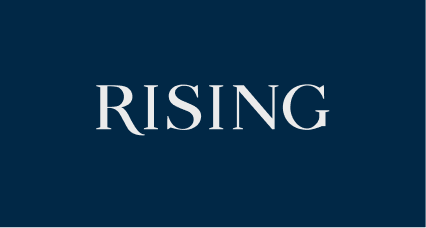
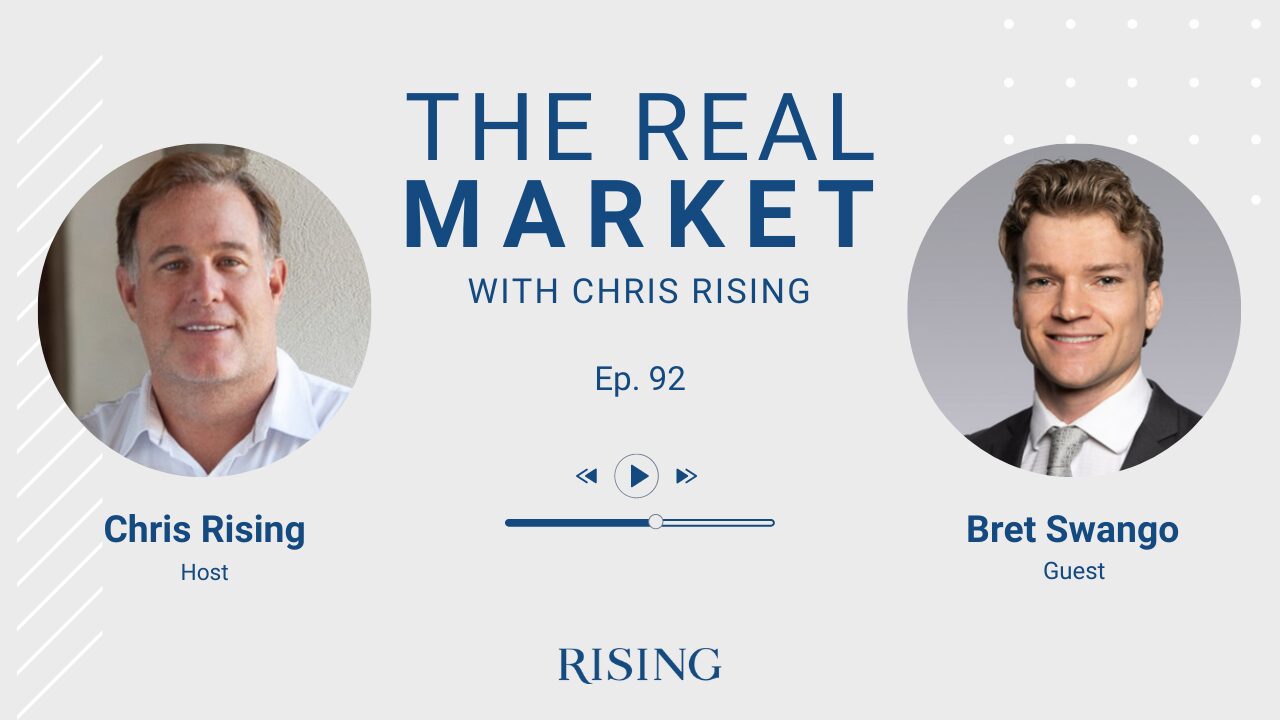
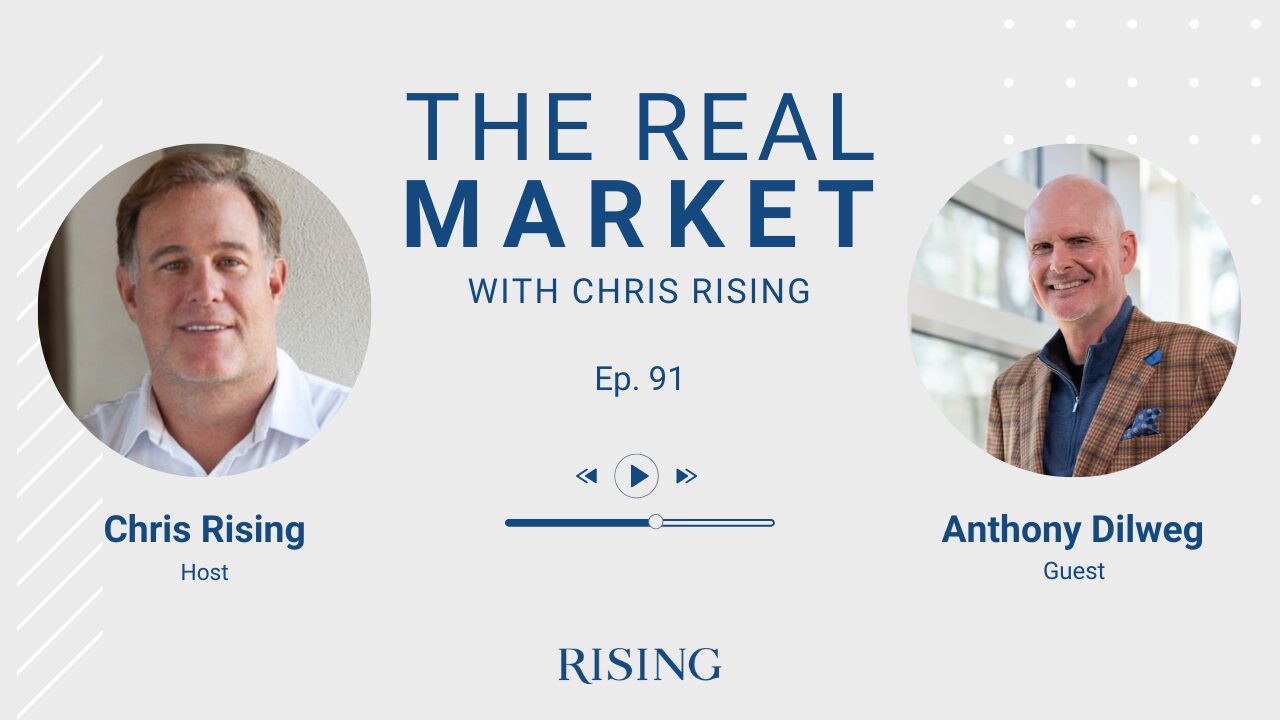
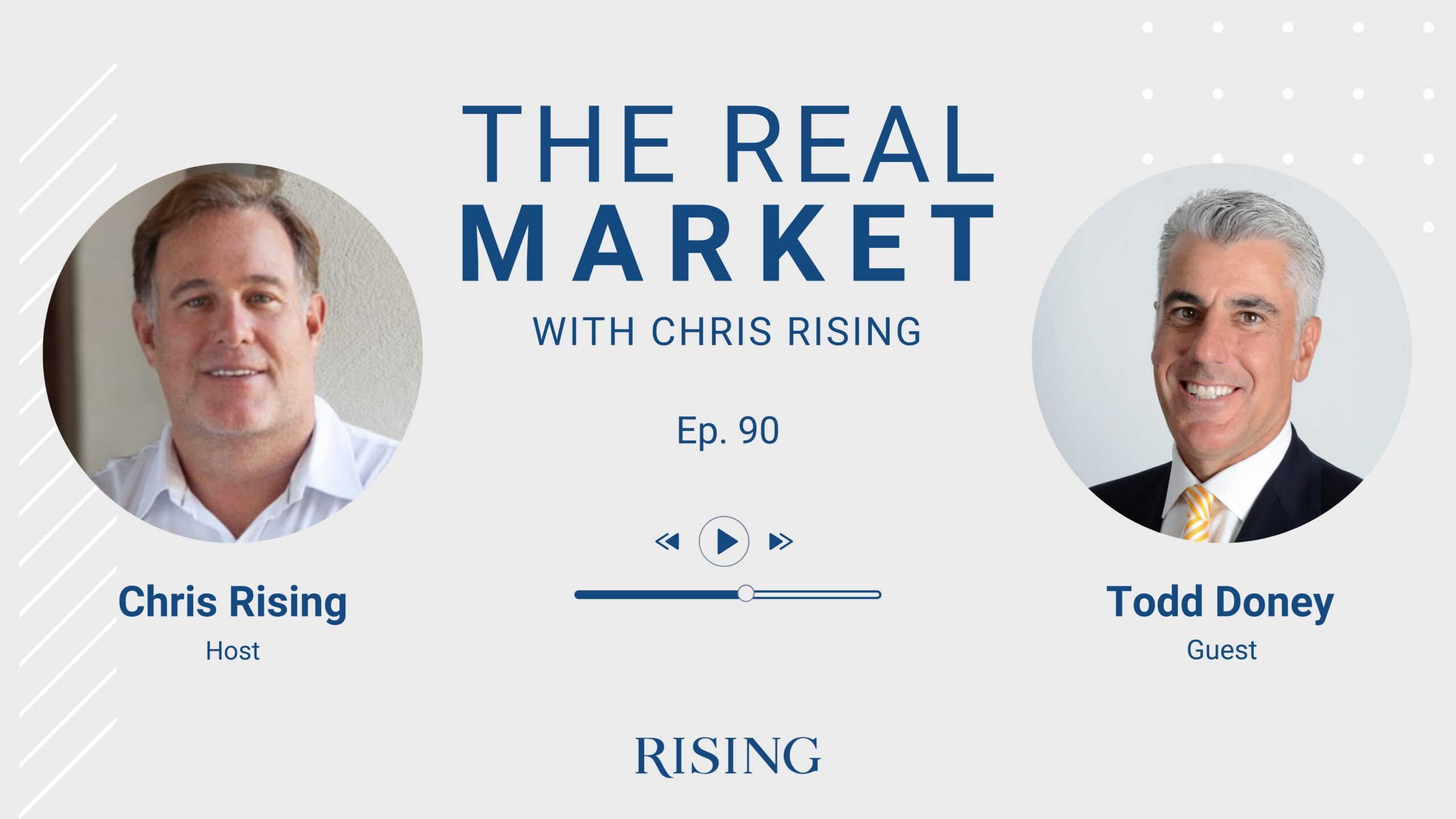
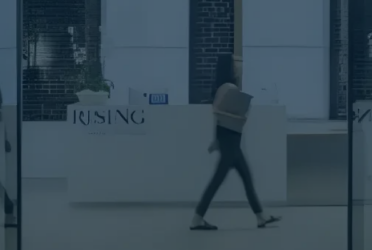

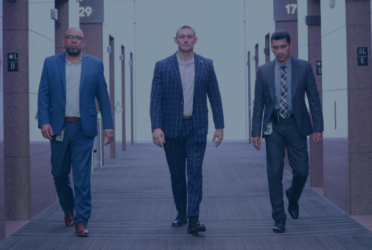
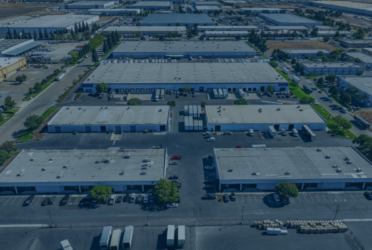
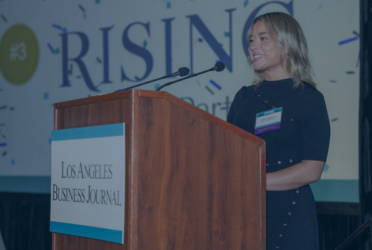
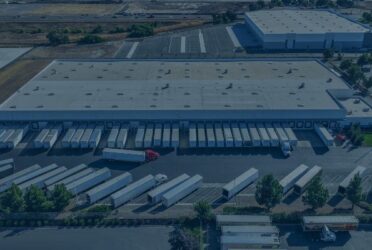
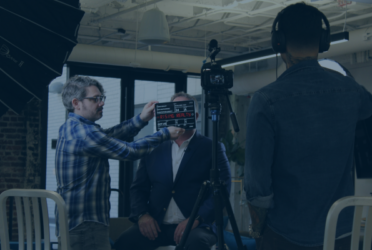
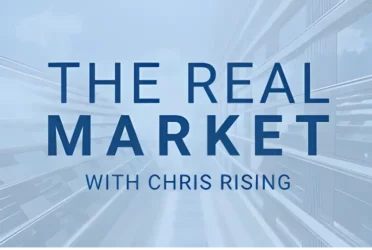 Podcast
Podcast